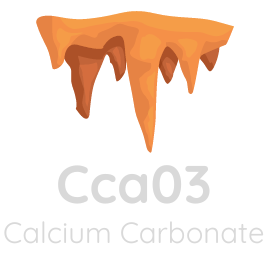
image:
The ZeroCAL approach, which can be integrated within the existing cement-production process, uses limestone feedstock to produce calcium hydroxide — which emits no carbon dioxide when burned to produce lime for cement. Byproducts of the process include hydrogen gas, which can be used as a clean-burning fuel to heat cement kilns.
view more
Credit: Adrienne Johnston
Researchers from UCLA’s Institute for Carbon Management have developed a method that could eliminate nearly all of the carbon dioxide emitted during the process of cement production, which accounts for about 8% of global atmospheric CO2 emissions.
In a new study published in the American Chemical Society’s journal Sustainable Chemistry and Engineering, the researchers describe how the new approach could be easily incorporated into existing cement-production processes, providing a more affordable alternative to existing solutions to decarbonize the industry.
Cement and concrete: An enormous carbon footprint
Ordinary Portland cement, the most common type of cement, is a foundational material used as the binding agent for almost all modern concrete — the world’s most-used material after water. This cement is made using limestone, an abundant and cost-effective natural source of lime.
However, the traditional method of cement production, which involves heating limestone in a fossil fuel–powered kiln to break its chemical bonds, leaves an enormous carbon footprint, resulting in nearly 1 kilogram of carbon dioxide emitted per kilogram of cement produced.
The thermochemical decomposition of limestone to produce lime, or calcium oxide — the primary precursor for cement production — accounts for about 60% of the CO2 released, while the combustion of fossil fuels to heat the kiln in which the chemical reaction takes place accounts for the other 40%.
This process also uses an enormous amount of energy. The production of a metric ton of lime (approximately 2,200 lbs) requires about 1.4 megawatt hours — enough to power one-and-a-half American homes for an entire month.
The ‘ZeroCAL’ solution: Eliminating CO2 emissions
Unlike limestone, calcium hydroxide — a zero-carbon precursor for lime and cement production — emits only water when heated in a kiln to produce lime. Inspired by this, a UCLA Samueli School of Engineering team led by Gaurav Sant, director of the Institute for Carbon Management, or ICM, and professor of civil and environmental engineering, developed a new approach for producing calcium hydroxide.
Using limestone as a feedstock, the researchers first dissolved the limestone in a water-based solution containing a common industrial acid called ethylenediaminetetraacetic acid. Through membrane nanofiltration, they then separated calcium derived from the limestone before using an electrochemical process to produce calcium hydroxide.
The researchers have named their method “ZeroCAL,” which stands for zero carbon lime, and the approach, they said, could remove 98% of the CO2 emissions associated with the thermochemical process of creating lime. ZeroCAL’s byproducts include commonly used hydrochloric acid and baking soda — as well as oxygen and hydrogen gas, the latter of which could be used as a clean-burning fuel to heat the cement kilns.
“The ZeroCAL approach offers an elegant solution to eliminate carbon dioxide emissions associated with the process of cement production,” said Sant, the study’s corresponding author and the Pritzker Professor of Sustainability at UCLA Samueli. “First, it addresses the carbon emissions resulting from limestone’s decomposition while providing clean hydrogen and oxygen to heat the cement kiln. Second, it enables onsite decarbonization while making use of existing kilns and limestone feedstocks without having to build separate carbon-capture and storage facilities.”
While the process currently requires more energy than existing lime-production methods, ongoing research suggests pathways by which ZeroCAL can achieve energy-use parity by simplifying and eliminating unit operations and making better use of the electrolytically produced acid and base co-products.
To meet ZeroCAL’s water demand, the team suggests focusing on cement plants near coasts or rivers, or facilities that have ready access to water supplies. The researchers said they are working with Ultratech Cement Limited, the largest cement manufacturer in India — the world’s second-largest cement market — to build a first-of-a-kind demonstration plant that will produce several metric tons of lime per day using the ZeroCAL process.
“It has become crystal clear that mitigating climate change demands urgent, paradigm-shifting actions across many areas to decarbonize our society,” said study co-author Fabian Rosner, an assistant professor of civil and environmental engineering at UCLA Samueli. “We believe the ZeroCAL process offers a unique pathway to enable accessible and rapidly scalable decarbonization of cement production in a way we have not previously considered.”
The ZeroCAL solution could also pave a new way for decarbonizing steel production by leveraging low-carbon lime as a source of calcium in the manufacturing process, the researchers said.
The research was funded in part by the Chan-Zuckerberg Initiative, the Grantham Foundation for the Protection of the Environment, the Schmidt Family Foundation, Shell, the U.S. Department of Energy’s Advanced Research Projects Agency–Energy and UCLA’s ICM.
In addition to Sant, ICM authors of the study include first author Adriano Leão and ICM associate directors David Jassby, professor of civil and environmental engineering at UCLA Samueli, and Dante Simonetti, associate professor of chemical and biomolecular engineering at UCLA Samueli.
The other authors are from the Technical University of Munich in Germany, UC Davis and the UCLA startup Equatic Inc. Sant and Jassby are both members of the California NanoSystems Institute at UCLA, and Sant holds an additional faculty appointment in materials science and engineering.
Journal
ACS Sustainable Chemistry & Engineering
Method of Research
Experimental study
Subject of Research
Not applicable
Article Title
ZeroCAL: Eliminating Carbon Dioxide Emissions from Limestone’s Decomposition to Decarbonize Cement Production
Article Publication Date
10-Oct-2024
Disclaimer: AAAS and EurekAlert! are not responsible for the accuracy of news releases posted to EurekAlert! by contributing institutions or for the use of any information through the EurekAlert system.




